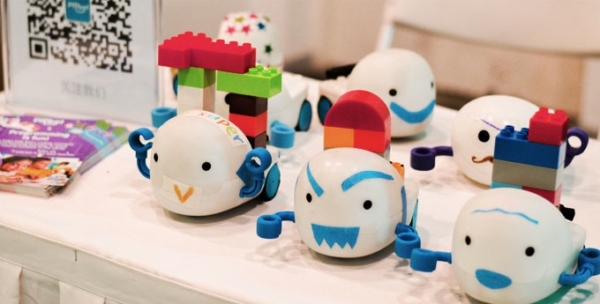The idea of teaching young children about the nuances of programming logic is quickly becoming more commonly accepted. Doing so benefits all types of skills, from visualization to problem solving, and help children confront the challenges of a rapidly developing world.
The Plobot is another in a long line of completely physical programming toys created to help children explore the world of progamming world in a very tactile way. Created by NYU robotics professor Rudi Cossovich and ex-Google engineer Sean Purser-Haskell, does away with syntax and computer screens while still educating children about algorithms, loops, conditionals, and more. Command cards are core to the Plobot experience, with each representing a block of code. Kids can tap or swipe them on Plobot’s head to string them together and create a program the robot follows, with the play card serving as an execute function.
